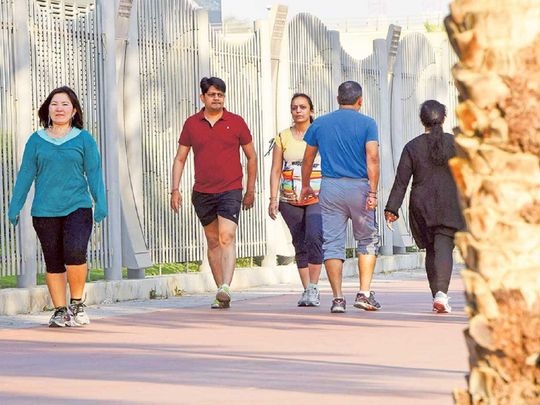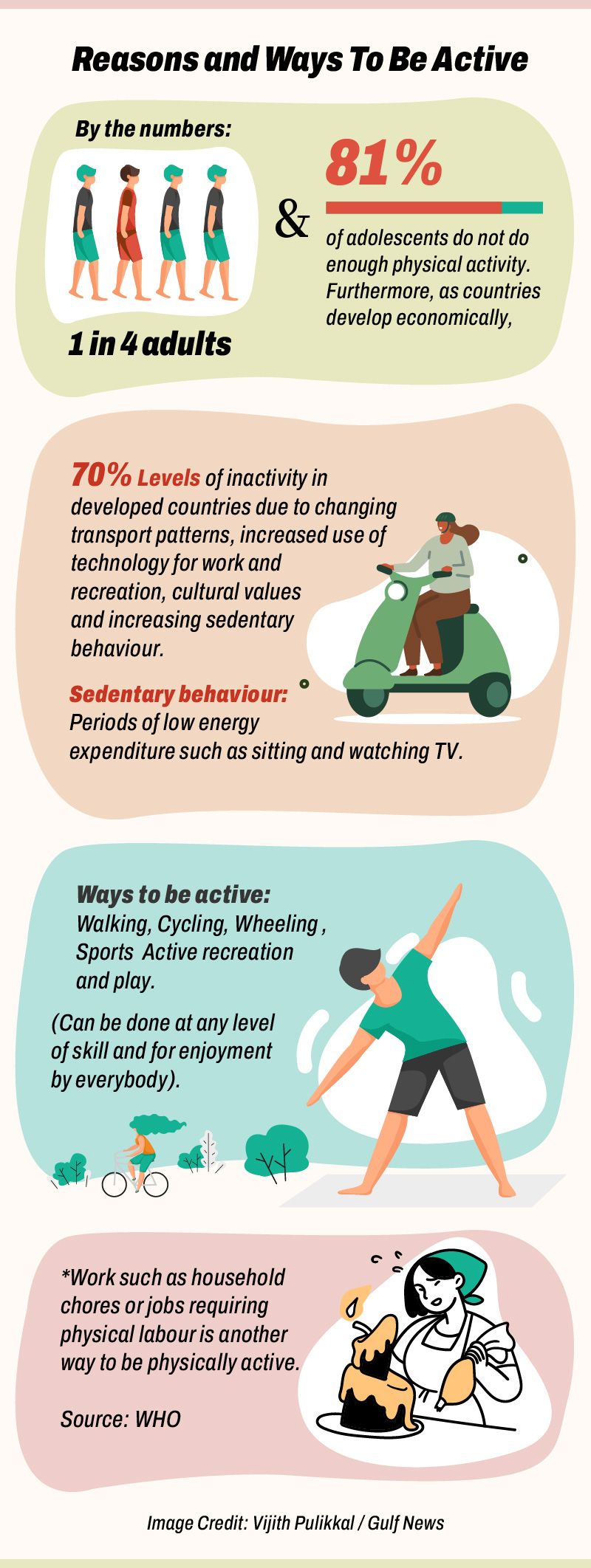
In a recent report, the World Health Organisation (WHO) has issued a stark warning: a lack of physical activity will lead to nearly 500 million new cases of preventable major non-communicable diseases (NCDs) and premature deaths between now and 2030.
It estimates that up 5 million deaths per year could be averted if the global population was more active.
Fact: A huge body of scientific studies show physical inactivity is one of the leading risk factors for noncommunicable diseases (NCDs) and death worldwide.
WHO data, however, shows a dramatic challenge: 1 in 4 adults and 4 in 5 adolescents don’t do enough physical activity. The economic costs is staggering.
An analysis prepared by the UN body predicts that by the end of the decade, if the prevalence of physical inactivity does not change, up to $300 billion in healthcare costs will arise as a result of half-a-billion new cases of preventable NCDs.
This is equivalent to about $27 billion in healthcare costs per year.
“These estimates do not include the significant indirect costs including loss of productivity,” the WHO stated as part of its “Active” campaign.

It echoes a report from the US Centres for Disease Control and Prevention (CDC), which issued an accompanying guideline urging people to “move more and sit less throughout the day; some physical activity is better than none”.
Walking, cycling
The WHO is promoting walking and cycling – as simple, cost-effective ways of being active. Both are accessible and affordable, and socially equitable. Cycling is also among the most efficient and sustainable means of transportation.
The WHO stated that “regular physical activity reduces risk of many types of cancer by 8–28 per cent; heart disease and stroke by 19 per cent; diabetes by 17 per cent, depression and dementia by 28–32 per cent".
The UN health body pointed to the economic, social, environmental and health benefits of walking and cycling.
The agency stated that “regular physical activity reduces risk of many types of cancer by 8–28 per cent; heart disease and stroke by 19 per cent; diabetes by 17 per cent, depression and dementia by 28–32 per cent".
2 studies on walking and longevity
There are a number of studies showing the correlation of physical activity to people's health:
#1. JAMA Internal Medicine, 2019
A study published in JAMA Internal Medicine in 2019, titled “Association of Step Volume and Intensity With All-Cause Mortality in Older Women” specifically focused on the impact of walking on longevity among older women.
The key question: “Are increased numbers of steps per day associated with lower mortality rates among older women?” The “cohort” study involved 16,741 women with a mean age of 72 years, and steps per day were measured over 7 days.
Result:
Women who walked at least 4,400 steps per day had a 41 per cent lower risk of death compared to those who walked fewer than 2,700 steps.
The benefits plateaued around 7,500 steps per day, suggesting that moderate, consistent walking can substantially improve life expectancy.
#2. Annals of Epidemiology, February 2024
More recently, a "cohort" study featured in the February 2024 edition of the journal Annals of Epidemiology examined the correlation between walking pace and the interval between the onset of noncommunicable diseases and mortality.
The study encompassed 391,744 participants from the UK Biobank, with a median age of 57 years and 54.7% being women. Data collection spanned from 2006 to 2010, with follow-up data gathered in 2021.
Participants categorised their usual walking pace as "slow," "steady," "average," or "brisk."
Result:
The study revealed that adults who reported an average or brisk walking pace exhibited a reduced likelihood of disease onset and a higher proportion of their lives lived without cardiovascular disease (CVD) or cancer.
In general, the faster the walking pace, the greater the risk reduction observed.
“Walking is an exercise that meets this aerobic component and is associated with improving high blood pressure and body mass index, and lowering the risk of diabetes, stroke, and cardiovascular disease, and early death,” according to an article published by the Harvard School of Public Health.
These studies confirm that taking more steps is good, though the exact amount to see a health benefit will vary among individuals.
Inactivity epidemic
A sedentary life, i.e. lack of physical activity, is considered a global health concern. Here’s why inactivity poses a health risk: Current global estimates show 1 in 4 adults and 81 per cent of adolescents do not do enough physical activity, according to the WHO.
Furthermore, as countries develop economically, levels of inactivity increase and can be as high as 70 per cent due to changing transport patterns, increased use of technology for work and recreation, cultural values and increasing sedentary behaviour.
Both sedentary behaviour and inadequate levels of physical activity have negative impacts on health systems, community and individual well-being and quality of life, alongside its knock-on effect on the economy in general.
Why walking matters
Walking, when turned into a regular physical activity, is proven to help prevent and manage noncommunicable diseases (NCDs).
It also helps to maintain a healthy body weight and can improve mental health, quality of life and well-being. Physical activity refers to all movement.

Average number steps per day
In 2017, a study monitored the activity levels of 717,527 individuals across 111 countries, utilising smartphones over an average period of 95 days.
What the study found:
- Switzerland: 9,650 steps (about 8 km each day)
- Japan: 7,168 steps
- China: 6,189 steps
- Australia: 4,491 steps
- United Kingdom: 5,444 steps
- Germany: 5,205 steps
- France: 5,141 steps
- Canada: 4,819 steps
- United States: 4,774 steps
- India: 4,297 steps
- Indonesia: 3,513 steps
Be He@lthy, Be Mobile
As part of the Be He@lthy, Be Mobile (BHBM) campaign, an initiative of WHO and the International Telecommunication Union, WHO is developing mActive, a four-week mobile phone-based walking programme.
mActive aims to help those less active to start and continue to be regularly active and achieve the mental and physical health benefits.
Based on best available science and behaviour change theory, and using small weekly goals, mActive will help users achieve the WHO recommendations of at least 150 minutes of moderate-intensity physical activity per week.







